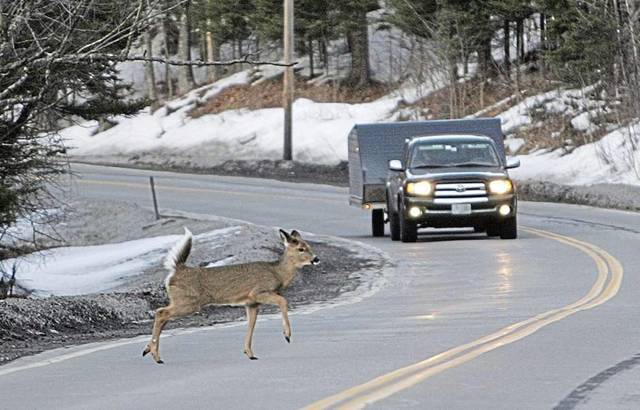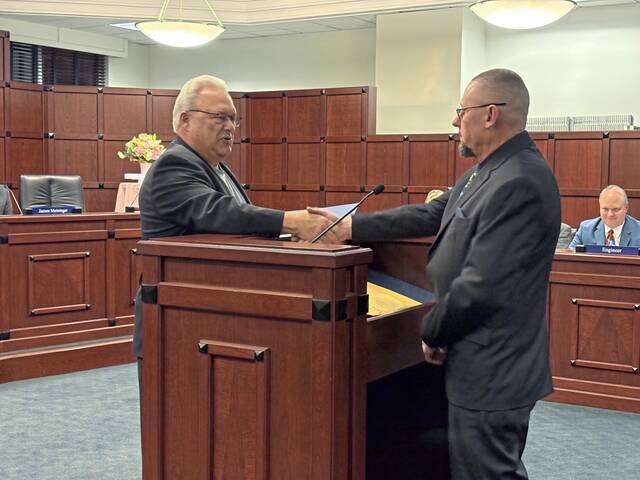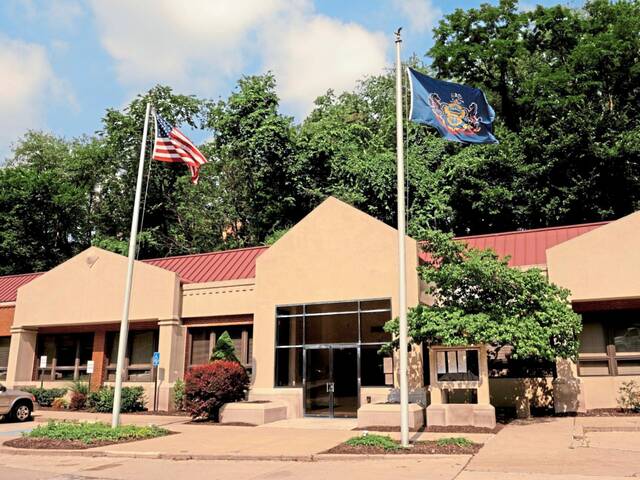Ross officials have long had a feeling that the number of deer roaming through township neighborhoods has been growing, or at least further encroaching on populated areas.
Now they know they’re not alone.
A randomly generated survey of 1,500 residents in all nine wards resulted in 575 responses detailing their encounters with deer.
Of the respondents:
• 62 percent felt there is a deer problem
• 57 percent responded that the deer population is growing
• 68 percent said deer have caused damage to landscaping, with the severity pegged at 1.94 on a scale of 1 to 3.
• Respondents placed the hazards to drivers caused by deer at 5.75 on a scale of 1 to 10.
The survey, which was designed as a way to get a snapshot of the frequency and types of problems residents are having with deer, was prompted by numerous complaints and anecdotal evidence of a growing deer population.
The township already has taken steps to begin addressing the overpopulation by enacting a ban on feeding deer.
“Clearly there’s a problem in this area, in my opinion,” said Commissioner Dan DeMarco, who authored the deer feeding ban.
“To this day I’m getting complaints about coyote, which I know are here because of the deer,” DeMarco said. “I’ve received picture from people who are getting herds of 10 or more deer in their yards. One guy called me a while back to say he counted 18 deer on his property.”
Commissioner Jack Betkowski added to the anecdotal evidence that too many deer in a community can make driving dicey.
“After 50 years of a spotless driving record, while driving in my ward this past Election Day I hit a deer,” he said during the Jan. 7 board meeting at which the survey results were discussed.
Pennsylvania ranks No. 1 in the United States for animal-related crashes, according to a recent study by the National Insurance Crime Bureau , with deer, by far, being the most common animal to be struck by vehicles followed by raccoon, dogs, turkeys and coyotes.
A county-by-county crash analysis by the Pennsylvania Insurance Department for 2012-16 put Allegheny County at the top, with 909 deer crashes.
A breakdown of survey responses by ward found that deer encounters and problems are occurring at different rates around the community.
In Ward 1, 81 percent of respondents said the township has a deer problem. Other sections of the township where a significant number of residents say a deer problem exists include Wards 9, 76 percent; Ward 2, 74 percent; and Ward 8, 72 percent.
Residents in three other wards reported a significant problem with deer damaging landscaping. In Ward 9, 88 percent said deer damaged landscaping, followed by 85 percent in Ward 1 and 83 percent in Ward 2.
In Ward 3, which had the lowest number of respondents who said their was a deer problem — 41 percent — only 5 percent of residents said deer had caused damage to their landscaping.
Parks and recreation director Eloise Peet, who crafted the survey, said the next step is to “drill down” in the areas of the township where the problem appears to most significant.
“There’s no point in wasting time in parts of the community where they don’t appear to have a problem,” she said. “We’ll need to have additional analysis conducted by experts to try to come up with possible solutions.”
To Begin crafting a strategy on how to deal with the problem, DeMarco, Betkowski and Commissioners Steve Korbel and Jeremy Shaffer will serve on a deer management committee to lead the process of gathering additional data and possible ways to mitigate the problem.
In addition to reducing the danger a growing deer population poses to drivers and expensive landscape, the ban on feeding deer and any future efforts to address the problem will also help stunt the spread of Lyme Disease, which is transmitted through the bite of infected black-legged ticks, or deer ticks, according to the U.S. Centers for Disease Control and Prevention.
Symptoms include fever, headache, fatigue and a characteristic skin rash. If left untreated, infection can spread to joints, the heart and the nervous system.
Tony LaRussa is a Tribune-Review staff writer. You can contact Tony at 724-772-6368 or tlarussa@tribweb.com or via Twitter @TonyLaRussaTrib.








